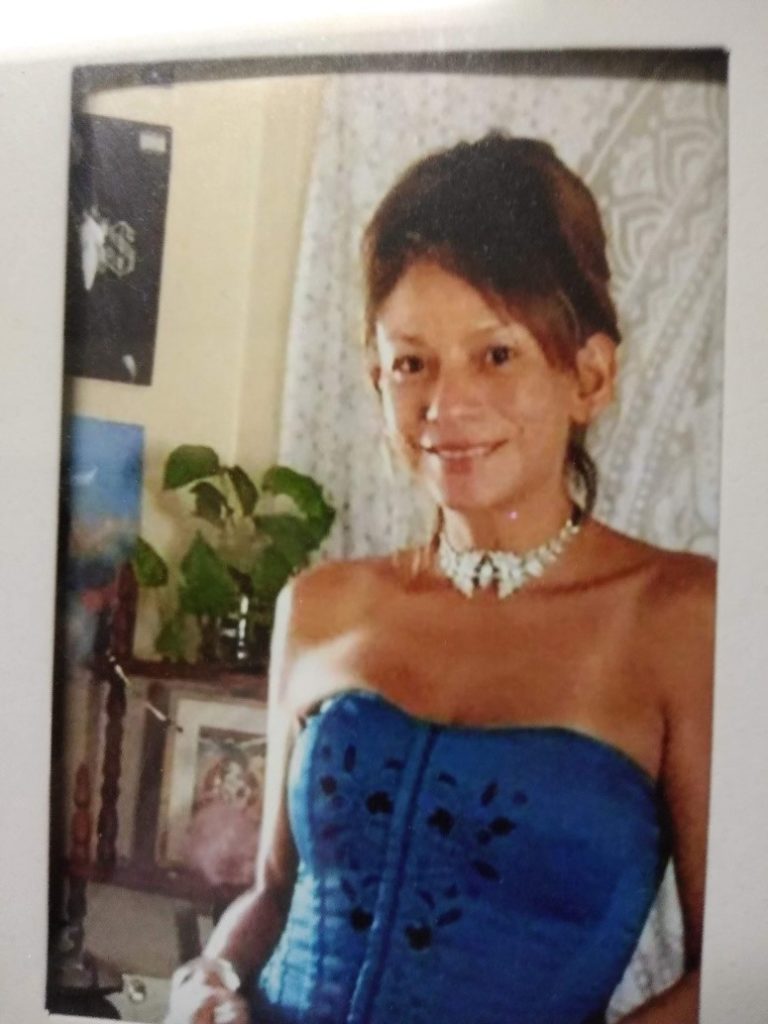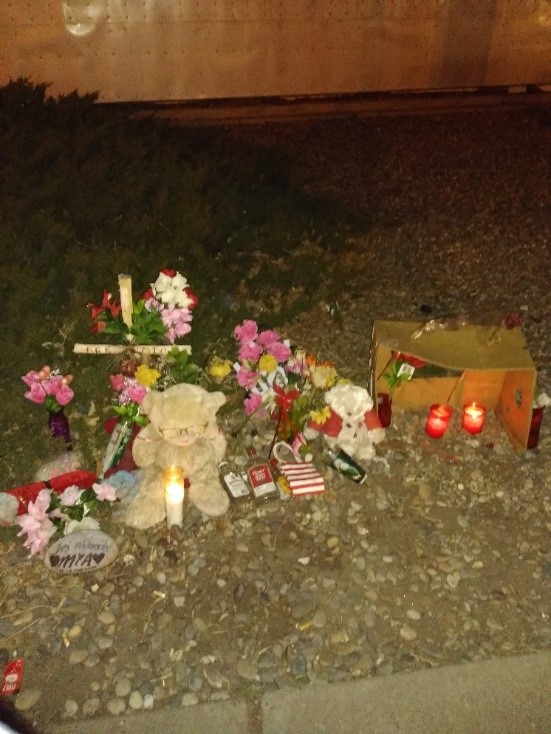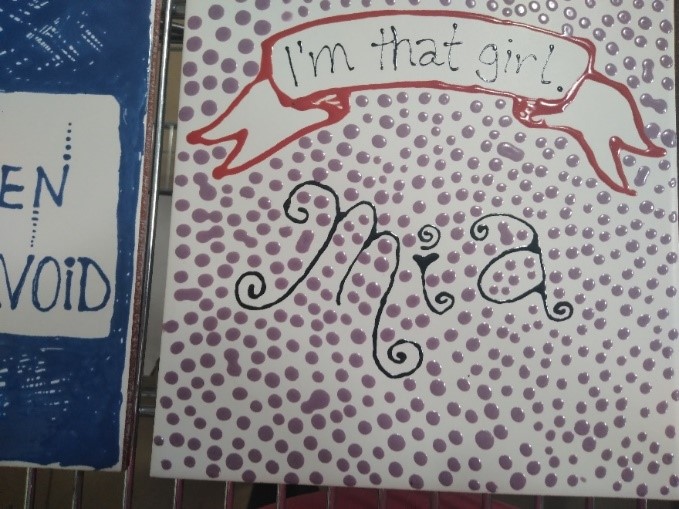More links related to these stories:

Mia
– As told by Carmon Ryals
A vibrant woman, Mia struggled with mental illness, substance use disorder, and chronic homelessness. Originally from Montana, she traveled widely before ending up in New Mexico.
Her life ended there when she was shot on the streets of Albuquerque in December 2018.
Carmon Ryals, a consumer leader with Albuquerque Health Care for the Homeless and a former Steering Committee Member of the NHCHC’s National Consumer Advisory Board, tells her story.
She Looks Down On Us All
Mia is what she went by—she didn’t use her last name on the street unless she had to. I knew her about 10 years.
Mia was a great, great woman. She was a Native American from Montana, although she looked Polynesian. Mia was almost 40 years old, and she had a great spirit. We live in the Western Skies area, and I say today that Mia is living in the skies looking down on the skies. And I believe that because I believe she’s up in the skies, not so much heaven. She was Native American, and I try and respect her beliefs.
She looks down and watches over all of us in our neighborhood, and she was always the one that looked after everyone.
Sad Cycles
I really don’t know the story behind [how she got to Albuquerque], but I think her experience of homelessness came from her mental illness and addiction. She was in Hawaii for a long time and homeless on the beach, and she prostituted there. She did escort service. How she got introduced to it… Well, I think she was sexually abused and had trauma, but it was also for her addiction to support her habit. And she had mental illness–severe mental illness. And alcohol and the meth just magnified that. She had paranoid schizophrenia. And some personality disorders, I’m sure.
At one point she wasn’t homeless. But, like with me—there were sometimes that I was doing really good and I wasn’t homeless, but then I’d slip back into homelessness because of my addiction and mental illness. I’d lose everything, or I’d sabotage myself.
My biggest enemy was sabotaging myself. I’d psyche myself out that I was doing so good and that I didn’t deserve what I had, you know? I’d get an apartment again, and I’d psyche myself out that I didn’t deserve it. And I’d sabotage myself through relapse and [feeling] that I just wasn’t good enough. And I think a lot of us struggle with that. We self-sabotage, and we end up back out on the street. And a lot of that is because we don’t have the supportive services wrapped around us.
That was her cycle for years, probably 20 years.
Relapses and Respites
She was not only a needle exchange client of mine, but I knew Mia from when I was out on the street—she’d been there for years, too. And I kept in touch with her mom. She and Mia’s daughter would call me, because she would stay [with me] sometimes.
She had a 14-year-old daughter, too. And a son. She was with [Mia’s] mom, and her son was in prison with my son. He got out right after she was murdered. We were going through the same issues. She would sometimes stay at my house and in my bed with me—because Mia knew she was safe [there], and that no one would try and attack her or ask for sex or money and use her. She could just have a safe place to sleep.
She’d leave town and try and get her stuff together. Sometimes she’d stay with her mom or her brother and clean up for a week. They would take care of her and help her clean up, especially from alcohol—she was already having liver problems. She’d come back sober. But I knew when she’d come back sober it was just a matter of time before she’d start using again because she hit the street, trying to take care of everyone and clean up the area, and she’d relapse again.
I’d try and get her to Health Care for the Homeless, and she didn’t want to come down. She didn’t want to deal with the mental issues and her liver. I mean, she was that bad of a drinker. You could tell sometimes that she was getting jaundice from her liver. She looked sick. And she knew when she needed to sober up for a while. But at least she was very cautious about using clean needles. She was very good about that.
In their own words:
Mia’s victories and setbacks.
“Just Mia in General”
She was bubbly. She liked to draw. She had a heart of gold. I mean she would give her last to someone. Like, if she had it, she would give it to you. If you were without she would make sure you had it. She was just a beautiful person, inside and out. And she’d tell you what she thought. Don’t get that twisted—she would tell you what she thought.
Mia struggled with alcoholism, addiction, and mental health. I remember her screaming at the cars, just how ballsy she was. Just how beautiful she was, just Mia in general. She was just a great person. I loved it when she was sober, because I told her “Don’t call me when you’re messed up. Don’t call me when you’re drunk.” She was hard to deal with when she was drunk. But I’d come to her anyway, no matter what.
She’d be begging for money for alcohol, because she would always have a pint of vodka with her. And it was funny because the Friday before she was murdered, I predicted that someone was going to drive by and shoot her in a rage because they were mad she yelled at them. “Quit staring at me, what are you looking at?”
Death on the Streets
Sure enough, that Sunday she was murdered by another homeless person from Memphis. It mortified everyone. She was killed in broad daylight at 3 o’clock in the afternoon in holiday traffic on a very busy street, yet no one saw anything or did anything about it, and everyone was afraid to speak up about it.
Apparently, she tased the guy earlier that morning. He was harassing her, so she tased him. She was very bold, and not scared of anyone. Well, he retaliated on her that afternoon. It was right in front of the Taco Bell, and it was caught on the cameras from the parking lot at Taco Bell and Kentucky Fried Chicken. He was stalking her. And he shot her.
I couldn’t believe no one helped her. She just died there by herself on a busy street. It was the weekend before Christmas with holiday traffic. The Sunday before Christmas, okay, with holiday traffic at three in the afternoon on a busy street.

No one stopped. No one. No one. I could not believe that.
In fact, it was really disrespectful when she was killed—she fell into the bushes, into the shrubs—and the way the cops pulled her up was so disrespectful. I just can’t believe the way it went down. I mean, like she was trash. They just picked her up like she was trash and threw her in an ambulance.
Well, I see them do that with a lot of homeless people, though. Like we’re trash out there. If you ever notice, see how they treat a homeless person when they’re picking them up and throwing them in a bus. See the compassion that they give them. Seriously. Rarely will you see compassion given to them.
And not only that, she was six weeks pregnant. Christmas Eve, they gave her a two-day burial in Montana because she was Native American. The day that her burial ended, which was Christmas Eve, I had to call her family and let them know that she was six weeks pregnant. She already went and got prenatal vitamins. I have the paper from the doctor with her pregnancy test.
I’m pretty sure that it had to have been her ex-boyfriend who she had just come back from Salt Lake City with. She had left him so she could come back and watch the Western Skies streets. But I’m pretty sure that it was his child. Being that she was Native American and with child, they had to do another ceremony.
The family didn’t know. They did not know. Because there was no autopsy done—she was shot and it just totally, blew everything away in her stomach … It was such a strong gunshot—a .44 Magnum or something. It just tore up everything she had, so they didn’t do an autopsy. But she was six weeks pregnant, and I had to let her family know that. And that was a big shock for them.
Shot by an attacker she knew, Mia’s death was sudden and violent. Her story illustrates the prevalence of violence in the lives of women without homes. Research shows that while men and women experience violence at virtually the same rate, being female is a significant predictor of knowing one’s perpetrator, experiencing rape, and suffering consequences after the attack.
Women, particularly those experiencing prolonged homelessness or engaged in sex work, are highly vulnerable: of the 500 women without homes surveyed in a single study, half had experienced violence.
Furthermore, women are more likely to be impacted by violence that leads to housing instability and homelessness. Intimate partner violence—stalking, threats, or physical violence, or psychological aggression—affects one in three women in the U.S., and approximately half of all women and children experiencing homelessness became homeless while trying to escape abusive situations. These women often report multiple episodes of violence, resulting in both physical and psychological trauma.
Health centers providing care to such patients must keep these considerations in mind when providing care. Trauma-informed, compassionate care is key, as is proper screening for violence during primary care visits to ensure that patients do not “fall through the cracks.”
For women in intimate relationships, for example, speaking to providers about abuse resulted in patients being four times likelier to use an IPV intervention, which relates to lessened violence exposure and better health. Care coordination to connect women without homes who have experienced violence with wraparound services is also critical to improving outcomes.
In their own words:
Coping with the aftermath of Mia’s death.
Shock And Remembrance

It happened three blocks away from my house. And by 5 o’clock that afternoon I had heard and was up there with candles by that evening.
I took it really hard when she was murdered. I tried to help the detectives. I felt like they wiped it under the carpet because she was homeless and an addict and a prostitute… It was a slap in the face.
I was in shock. The shock stayed with me, probably for four months after that. I was just numb. I’ve had friends die, but I’ve never gone through the type of mourning that I went through for her. Because it was so senseless. And just the way she was so disrespected not only the community but by the police. I felt they let her down.
But, you know, that’s the life they kind of expected. With us being on the streets… Those of us that have family that care about us and know about mental illness—they kind of knew that that might one day happen to her. Almost expecting it. But [even so], it was a shock to them as well. Because Mia was a survivor. She’s like me, she was a survivor.
Since she died, I haven’t talked to her mother. Her mom didn’t return my calls. She took it really hard—she didn’t even want Mia’s paperwork—her social security card, her ID. I even had her bloodwork papers to show that she was Native American and what tribe she came from. She didn’t want any of that back. I’m sure it devastated her.
But we kept a vigil for Mia. I started a vigil and kept a shrine there for her until the owners of the building tore it down… But I’m making her a tile now for the Homeless Memorial, which goes on the back of our wall in the back of Albuquerque Health Care for the Homeless—and she’ll have her own tile which will be dedicated to her at the Homeless Memorial in December 2019.
I’m not the person I was years ago, I’m not that crackhead on the street. I’m a good citizen. But no matter what Mia did—yelling at the cars, shooting meth, drinking alcohol, whatever she did, or tasing that guy in self-defense—she did not deserve to die the way she did, to die period. And she didn’t deserve for anyone on those streets to ignore her when she got shot. They just drove by her like she was a piece of s—t.
She had a beautiful soul. She really did. And I still walk by on the street and talk to her where she was shot at.
What can you do to stop homeless deaths?
Join us in working toward a world in which no
life is lived or lost in homelessness.
